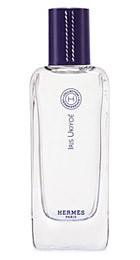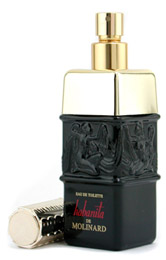Call me crazy, but I don’t like Obsession for Women. I like the men’s version a bit better but both of them fell off my radar and into ‘Eh, don’t like it and can’t get myself to’ territory. Much like how Poison by Dior ended up there.
In Bottle: Warm and spicy, very reminiscent of Opium but not as smooth or as smoky. I smell the animalic in this up front too.
Applied: Obsession opens with a slight spray of green citrus which is quickly joined by the civet note. Civet is used well in most perfumes, often as a touch of sensuality and Obsession is no exception. Anyway, after the light citrus and civet open up, the fragrance digs a bit into a fruity jasmine and rose blend dolled up with a lot of spiciness. There must be cloves or cinnamon in there somewhere. Obsession’s projection, by the way, is very good as is its longevity. You’ll be waiting a rather long time for it to dry down but the fragrance dries so naturally into a deeper woodsy floral amping up the civet a little and mingling those spices with a very warm amber quality to it and a slight smokiness that eeks itself into the scene at the very end.
Extra: Obsession was released in 1985 during the crazy trend with oriental perfumes.
Design: Obsession’s bottled in a oval glass with a golden liquid inside. The cap is a rich brown shade. The packing looks nice enough and a bottle of Obsession is definitely easy to ID. It’s clean, it’s simple, it’s pretty good.
Fragrance Family: Oriental
Notes: Green notes, mandarin orange, vanilla, peach, basil, bergamot, lemon, spices, coriander, sandalwood, orange blossom, jasmine, oakmoss, cedar and rose, amber, amber, musk, civet, vanilla, vetiver, incense.
Obsession is a well done perfume. I just want to get that out there, I just don’t like it because I believe it’s very similar to Opium and Opium did this concept better which makes Obsession seem rather unnecessary to me. But then, Opium is stronger, so if you liked it but thought it came on way too much, try out Obsession and see if this will work better for you.
Reviewed in This Post: Obsession for Women, 2004, Eau de Parfum.




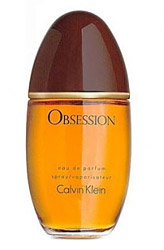
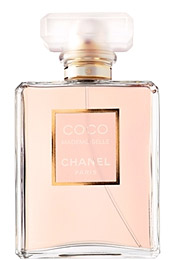

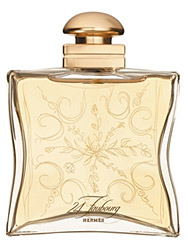


 this fragrance as well which does not help in the least in terms of identifying which style the original formula came in. Adding to this complication is Houbigant’s very sad but very complicated recent history and Raffinée not being as well known as it should be. I would like to take an educated guess but would rather not risk being wrong. The fragrance’s general theme seems to be art deco etched in gold on red which sounds like a tasteful treatment. Of the bottles I looked at, the ones involving the art deco design gave the packaging a bit of old design appeal. Much more interesting that the designs that lacked the art deco elements. If you can help me out with the vintage fragrance’s design, please leave a comment!
this fragrance as well which does not help in the least in terms of identifying which style the original formula came in. Adding to this complication is Houbigant’s very sad but very complicated recent history and Raffinée not being as well known as it should be. I would like to take an educated guess but would rather not risk being wrong. The fragrance’s general theme seems to be art deco etched in gold on red which sounds like a tasteful treatment. Of the bottles I looked at, the ones involving the art deco design gave the packaging a bit of old design appeal. Much more interesting that the designs that lacked the art deco elements. If you can help me out with the vintage fragrance’s design, please leave a comment!